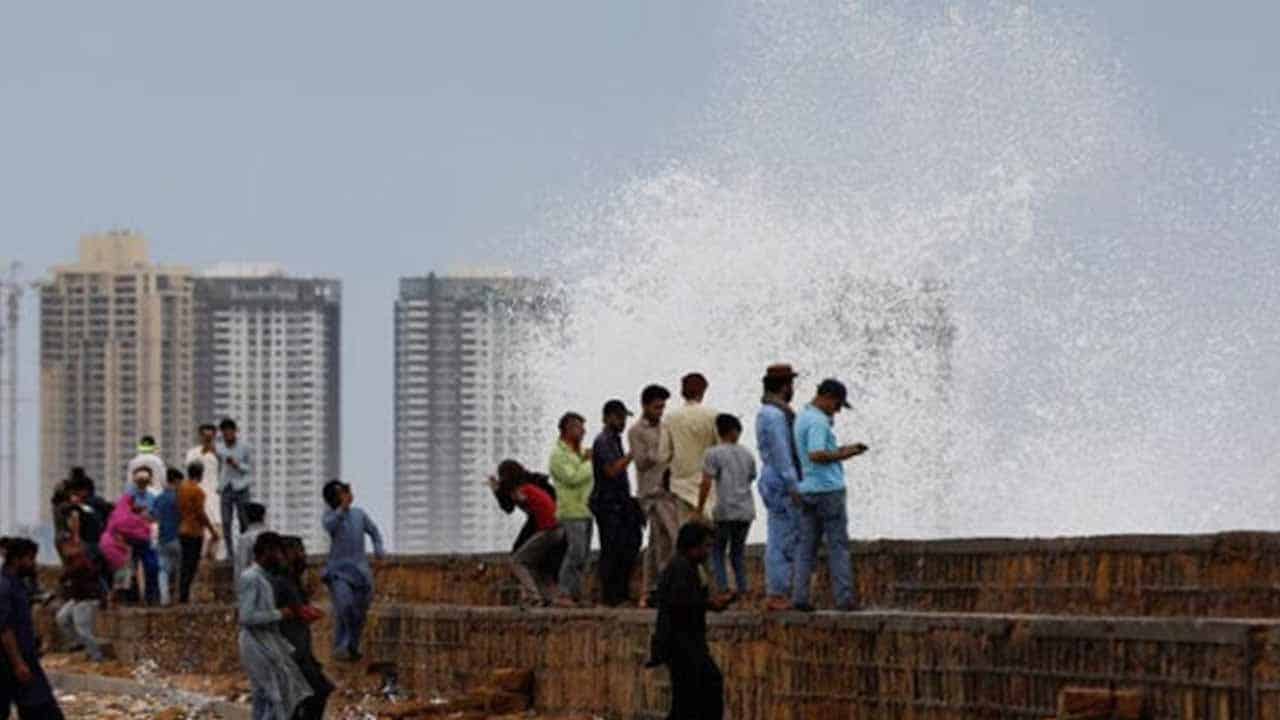Senator Sherry Rehman, Federal Minister for Climate Change, stated on Thursday that Cyclone Biparjoy has “slowed down” and will not reach landfall before evening.
“Cyclone Biparjoy has slowed down, but the core remains intense,” she tweeted. “It will not make landfall before dark.” The National Disaster Management Authority will provide additional information soon.”
The climate minister stated during a news conference in the federal capital that the landfall of Biparjoy at the Pakistani coastal belt has been delayed due to slowing, and that it is scheduled to impact the Keti Bandar area of Sindh province at midnight today.
“Because its speed has slowed by 6-7km, its time of landfall has been delayed, and it is now expected to hit the shores after dusk.”
The cyclone has now recurved towards the northeast, which is optimistic given its origin in Karachi, according to the climate change ministry.
The Pakistan Meteorological Department (PMD) indicated in its morning forecast that the storm would make landfall between Keti Bandar and India’s Gujarat by nightfall.
Maximum sustained surface winds are 120-140 km/h, with gusts up to 150 km/h around the system’s core. “The sea conditions are phenomenal around the system centre, with maximum wave heights of 25-30 feet,” according to the Met Office.
The Very Severe Cyclonic Storm Biparjoy over the northeast Arabian Sea has traveled north-northeastward in the previous 06 hours and is presently located at Latitude 22.8°N & Longitude 67.0°E, approximately 230 kilometers south of Karachi, 235 kilometers south of Thatta, and 155 kilometers south-southwest of Keti Bandar.
“Under the current upper-level steering winds, the cyclonic storm is likely to continue tracking northeastward and cross between Keti Bandar (Southeast Sindh) and the Indian Gujarat coast 15 June evening (today) as a very severe cyclonic storm with packing winds of 100-120 km/h gusting 140 km/h.”
With its likely approach to the southeast Sindh coast, widespread wind-dust/thunderstorm rain with some very heavy/extremely heavy falls and high-intensity winds of 100-120km/h gusting 140km/h are expected in the districts of Thatta, Sujawal, Badin, Tharparker, Mirpurkhas, and Umerkot from June 15-17.
On and tomorrow, dust/thunderstorm rain with a few heavy falls and squally winds of 60-80 km/h are expected in Karachi, Hyderabad, Tando Muhammad Khan, Tando Allahyar, Shaheed Benazirabad, and Sanghar districts.
On Thursday and Friday, dust/thunderstorm rain with isolated heavy rains is expected in the Balochistan districts of Hub, Lasbella, and Khuzdar.
The high winds may cause damage to loose and susceptible structures (Kutcha homes), including solar panels, among other things.
A storm surge of 3-4 metres (10-13 feet) is forecast at landfall (Keti Bandar and surrounding areas), which might inundate low-lying towns.
The sea conditions around the Sindh coast can be quite rough and high (2-2.5 metres) and rough to very rough (two metres) near the Balochistan coast (Sonmiani, Hub, Kund Malir, Ormara, and neighbouring areas).
‘Rainfall lashes Sindh coastal belt’
Meanwhile, torrential rain and strong gusts have pummelled Thatta, Makli, and neighboring districts under the effects of Cyclone Biparjoy.
Jati, Shah Bandar, and surrounding areas, as well as the Badin district’s coastline belt, have also seen significant rains and high gusts.
The seawater infiltrated communities and invaded Kalkachhani, cutting its land connection with other sections of the Sujawal district.
‘Evacuation completed’
According to the climate minister, the evacuation process in the impacted parts of Sindh’s coastal belt has been completed, and over 82,000 people have been relocated to safer areas.
According to information supplied by the minister and the chief minister of Sindh, 82,000 people have been evacuated from the three most susceptible districts of Thatta, Sujawal, and Badin, where 44 relief camps have been established.
“The administration evacuated 17,000 residents of Keti Bandar, and 3,000 locals voluntarily relocated to other areas.” Keti Bandar’s six relief camps can house 5,000 people, and 2300 families have already arrived.”
The administration evacuated 3,700 people out of a total population of 5,200 in Ghorabari taluka of Thatta district, while 1,500 people voluntarily relocated. There is enough for 1,000 people in three relief camps created in Ghorabari, and 445 families have been relocated.






